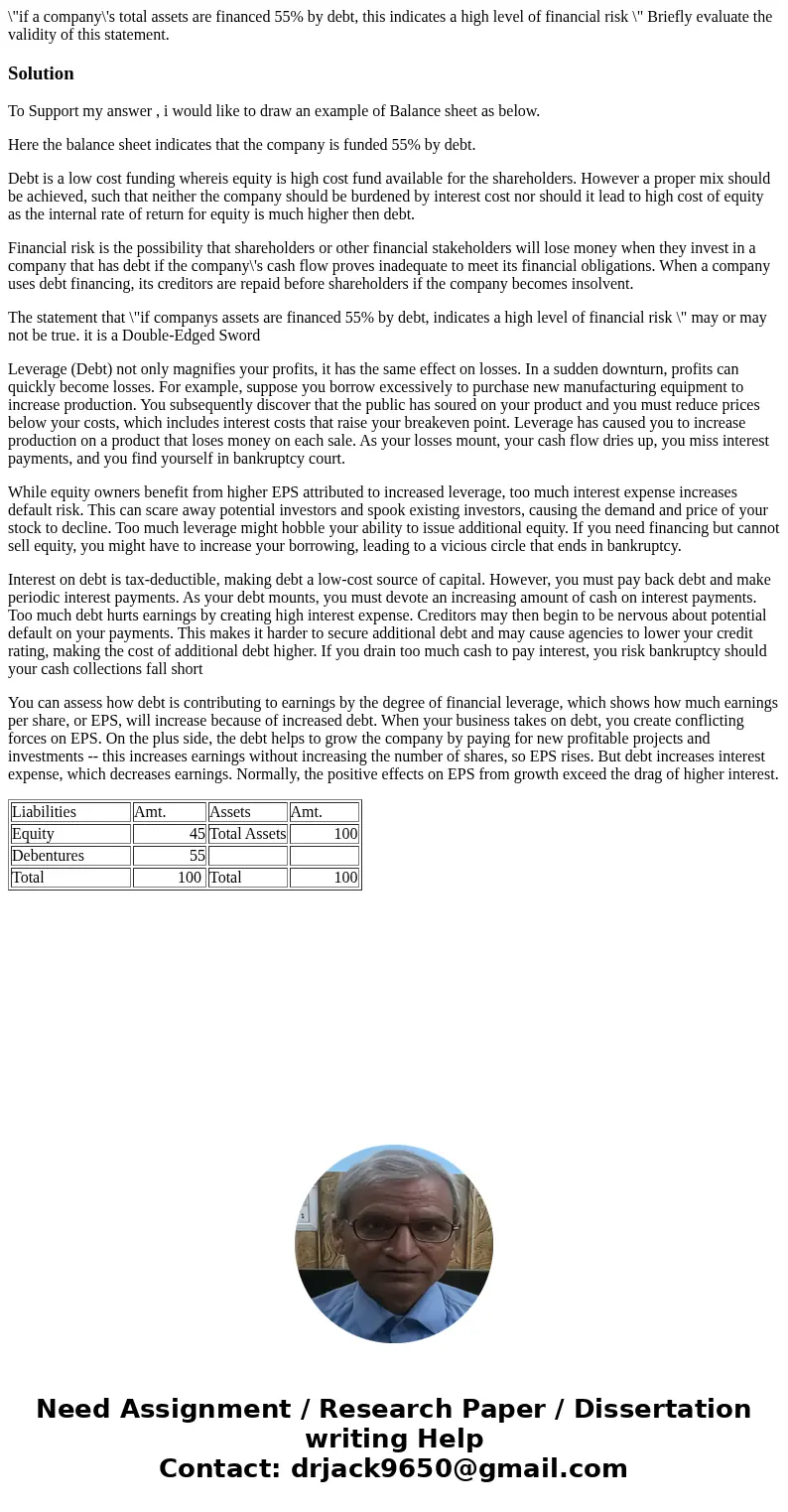if a companys total assets are financed 55 by debt this indi
\"if a company\'s total assets are financed 55% by debt, this indicates a high level of financial risk \" Briefly evaluate the validity of this statement.
Solution
To Support my answer , i would like to draw an example of Balance sheet as below.
Here the balance sheet indicates that the company is funded 55% by debt.
Debt is a low cost funding whereis equity is high cost fund available for the shareholders. However a proper mix should be achieved, such that neither the company should be burdened by interest cost nor should it lead to high cost of equity as the internal rate of return for equity is much higher then debt.
Financial risk is the possibility that shareholders or other financial stakeholders will lose money when they invest in a company that has debt if the company\'s cash flow proves inadequate to meet its financial obligations. When a company uses debt financing, its creditors are repaid before shareholders if the company becomes insolvent.
The statement that \"if companys assets are financed 55% by debt, indicates a high level of financial risk \" may or may not be true. it is a Double-Edged Sword
Leverage (Debt) not only magnifies your profits, it has the same effect on losses. In a sudden downturn, profits can quickly become losses. For example, suppose you borrow excessively to purchase new manufacturing equipment to increase production. You subsequently discover that the public has soured on your product and you must reduce prices below your costs, which includes interest costs that raise your breakeven point. Leverage has caused you to increase production on a product that loses money on each sale. As your losses mount, your cash flow dries up, you miss interest payments, and you find yourself in bankruptcy court.
While equity owners benefit from higher EPS attributed to increased leverage, too much interest expense increases default risk. This can scare away potential investors and spook existing investors, causing the demand and price of your stock to decline. Too much leverage might hobble your ability to issue additional equity. If you need financing but cannot sell equity, you might have to increase your borrowing, leading to a vicious circle that ends in bankruptcy.
Interest on debt is tax-deductible, making debt a low-cost source of capital. However, you must pay back debt and make periodic interest payments. As your debt mounts, you must devote an increasing amount of cash on interest payments. Too much debt hurts earnings by creating high interest expense. Creditors may then begin to be nervous about potential default on your payments. This makes it harder to secure additional debt and may cause agencies to lower your credit rating, making the cost of additional debt higher. If you drain too much cash to pay interest, you risk bankruptcy should your cash collections fall short
You can assess how debt is contributing to earnings by the degree of financial leverage, which shows how much earnings per share, or EPS, will increase because of increased debt. When your business takes on debt, you create conflicting forces on EPS. On the plus side, the debt helps to grow the company by paying for new profitable projects and investments -- this increases earnings without increasing the number of shares, so EPS rises. But debt increases interest expense, which decreases earnings. Normally, the positive effects on EPS from growth exceed the drag of higher interest.
| Liabilities | Amt. | Assets | Amt. |
| Equity | 45 | Total Assets | 100 |
| Debentures | 55 | ||
| Total | 100 | Total | 100 |

 Homework Sourse
Homework Sourse